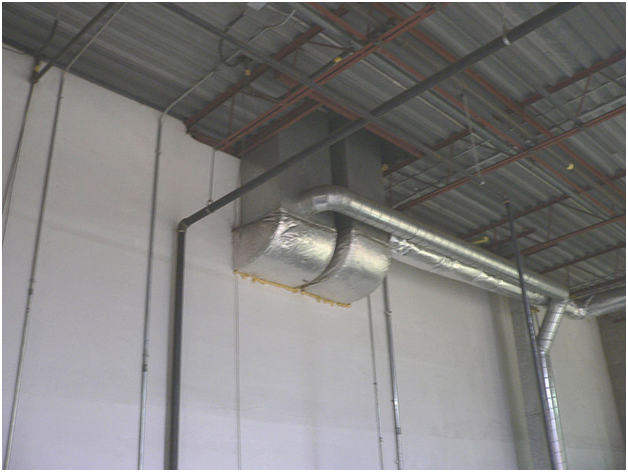
Five more reasons to choose spiral ducting
There is an increasing trend in architecture and interior design to use as features certain things which would previously have been hidden away. Doing this can give a more interesting look to public spaces like shops, restaurants and conference halls. But it’s a growing movement in offices and even in living spaces too.
There are more reasons for using spiral ducts other than the fact that they look good, though, so here are some further reasons to use them in your future HVAC projects.
1. Losing the edge
With traditional square ducting, the air has to move around sharp edges at joints and corners, as well as negotiating features such as turning veins, dampers and the cartridge filter. Using a spiral duct means less obstruction to the air flow and fewer sharp edges throughout the design. This in turn means less noise and a more efficient installation.
Image Credit
2. Easier maintenance
All ventilation systems need regular maintenance, including the replacement of the cartridge filter with a new one, from a supplier such as https://www.dustspares.co.uk/filters/. Cleaning methods for spiral ducts are well understood and widely available, giving you plenty of options and offering low cost options.
3. Slimmer connections
Other ducting methods need bulky connectors in order to make joints. Reinforcements may be needed at joints and corners in order to prevent reverberation and vibration. Spiral ductwork eliminates this need, making a neater installation and one that can be fitted into tighter spaces.
4. Easier measuring
As part of the maintenance of air con, heating and ventilation systems, it’s necessary to take measurements of the airflow. There are a number of ways of doing this, but with a spiral duct, you will find that there are many different tools available specifically designed for the job, making maintenance easier and more cost effective.
5. Cheaper installation
Compared to rectangular ducting, the cost of installing a spiral duct can be much less – up to half as much. This takes account of the total cost of the system, not just the cost of the product, but also transportation and the cost of labour and parts needed to install the system. As spiral installations are generally simpler, there’s less need for extra components and work to make joints and ensure an effective, reliable system.
